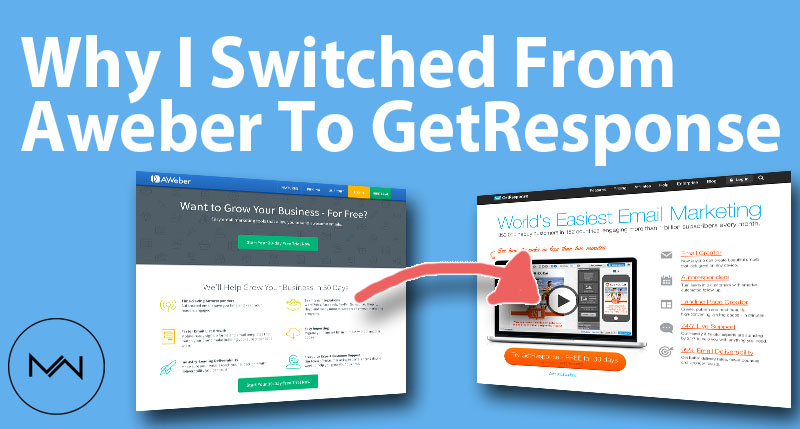If you've considered using affiliate marketing in your business but failed to find a way to make an offer convert, listen up! Affiliate marketing is a simple additional revenue stream that pretty much anyone can implement to make money online, no matter what business you currently have. In this article, I'm going to share how to start affiliate marketing and the strategy I use to make affiliate offers convert.
The majority of our income at Evergreen Profits now comes from affiliate commissions generated by creating what we like to call Key Step Tutorials (KST). It far surpassed income generated from clients once we really got this dialed in.
However, there’s an alternative method that we also use. It’s called “Side-by-side product comparisons.” We write an article that compares the product that we are promoting to one of the competing products. I think it goes without saying but, the product you are promoting should always come out as the obvious choice.
While this strategy is not quite as effective as KSTs, it still works extremely well. Here are three things to consider when using this strategy.
- The reason why side-by-side product comparisons are not as effective as KSTs is because most people land on the content and realize that it is biased and that the person that wrote it is either an affiliate or the product creator.
- It is much more effective if comparative content is on a 3rd party site like a personal blog so it’s not quite as obvious that you are biased one way or the other.
- That being said, always be sure to disclose that you are an affiliate somewhere on the page. The goal is to convince the reader that the product you are promoting is better than the alternative, not to trick them into thinking it’s a completely unbiased review.
The real power behind this comparative content comes with the ease at which we can drive traffic to it. Once a piece is written that shows why our product is better than product X, we can easily set up ads in Google Adwords where we target the competitor’s product name.
For example, let’s say that we want to promote Drip as the better alternative to Infusionsoft… We would write up a comparative article that shows all of the reasons we like Drip better. We would then login to Google Adwords and create an ad campaign that links to our article and targets anyone who searches for “Infusionsoft” or “Infusionsoft Alternative.”
Over time, our article might even rank organically in the search engines for those terms and we can back off our ad spend and earn our commissions off the organic traffic.
One of my most successful blog posts to date generates roughly $600 per month reliably every single month. It is a blog post that I wrote back in 2013 that compares two autoresponders, GetResponse and Aweber.
Here’s an excerpt from the intro to this post or feel free to read the full piece here.
“For the longest time, I’ve always sung the praises of Aweber for my email marketing. This weekend I decided that it’s no longer for me…
I made the switch from, arguably the most popular autoresponder among marketers, to another one that had much more features that I wanted.
I switched over to GetResponse. I feel a little bit bad about my decision. I’ve been with Aweber since about 2008 and I’ve always loved them and promoted them as an affiliate. We had a good run, I had a massive mailing list with them, we had good times together but it had to come to an end…
There’s absolutely nothing wrong with Aweber at all. I still think they are a great company and I still wouldn’t hesitate to give them a good recommendation if someone asked me about them. I’m just digging some of the features of GetResponse a bit more.”
The blog post then goes on to explain all of the features that I liked about GetResponse that Aweber didn’t have. I did not focus on any of the features that Aweber had that GetResponse did not. It was very biased in the sense that I was able to handpick exactly which features I wanted to highlight.
However, part of the magic of this blog post was the intro that I quoted above. You will notice that I said nothing bad about Aweber. I even praised Aweber a little bit. I told the reader that I have used both and am a fan of both. This offsets the idea that I’m completely biased. People see it as one peer describing their experience to another.
Spending time praising Aweber and explaining my good experience with them builds the credibility that this is not a “bash the competition” post. It’s actually a post by a conflicted consumer who was torn between making the switch. Approaching it with this angle, made all of the difference.
Had the post jumped straight to why GetResponse was way better and ignored the fact that Aweber is actually a good company that I like and respect, readers would most likely dismiss it quickly as an article by an affiliate, looking to make a quick buck. Keep this in mind when creating your comparison articles.
This single article, to date, has generated 871 unique visitors to my affiliate link, 132 free trial signups for GetResponse, and 77 front-end sales… And the best part about promoting something like GetResponse is that the commissions that it generates are recurring. Customers pay on a monthly basis. Finding offers that pay affiliates on a recurring base is one of the most common overlooked details when people start considering how to start affiliate marketing.
As a quick side note, we at Evergreen Profits, no longer use GetResponse as much as we used to. We now mostly use Drip now. However, we still love GetResponse and still have accounts with them. It’s just not our preferred autoresponder any longer. I just wanted to be completely transparent about that.
Now that you know how to start affiliate marketing, you'll need to start driving traffic to your blog post. Here's how to drive more traffic to your site.












